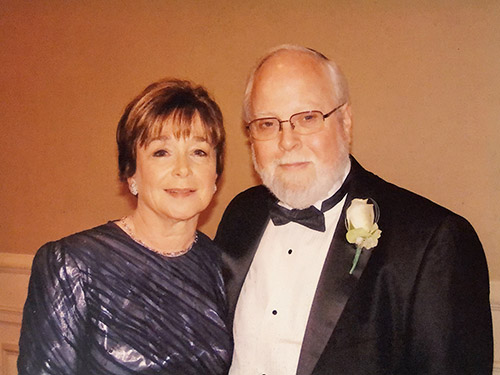
Little more than a week ago the city of Rochester lost the person one could call its “chief rabbi.” Rabbi Shaya Kilimnick, z”l, was the rabbi of Congregation Beth Shalom for 43 years.
When a young rav and his rebbetzin face the challenges of a new city, new congregation and new environment, they either embrace the challenge with gusto or they wander around trying to find themselves. Rabbi Shaya and Rebbetzin Nechie (who today faces severe health challenges) jumped into their new role and included it in every aspect of their daily life.
It was not as if Rochester did not already have a Jewish presence. There is a Chofetz Chaim yeshiva as well as several other small shuls in the city, but Beth Shalom, through the charisma of the Kilimnicks, became the beacon of kiruv for many Jewish families in the Rochester area. Warm and caring, the Kilimnick home suddenly became a showcase for what Shabbos or Yom Tov should be like, and many who had never had the experience before suddenly became a part of these magical moments. NCSY, which has done miracles with unaffiliated youth for so many years, was most welcome in Rochester at Beth Shalom, and was one of the highlighted homes for its Har Sinai region.
There is much to be said about the Kilimnicks and their successes, yet we find it even more important to concentrate on what an impact a rav and his rebbetzin have on a community in very quiet, lesser-known ways. Whereas in large Jewish communities, especially those in major cities, e.g., Los Angeles, Chicago and New York, rabbonim find acclaim particularly because of where they are located. When a rav of a shul in New York City voices his opinion on either a Jewish or worldly event it is spread to a far wider audience. It is the smaller town rav who never is mentioned publicly amongst rabbonim in terms of how they themselves are dealing with various situations.
The forte of the Kilimnicks was that they were involved quietly and privately in the lives of so many, and they walked the streets of Rochester having ingrained themselves in the hearts of various families with no one ever knowing anything about their involvement. We can so relate to this feeling, where there are so many secrets that rabbis hide within themselves about their baalabatim that they are entrusted to keep to themselves.
Living out of town as a rav has a totally different spin. Challenges of families experiencing intermarriage, children who have realized that they are gay, couples where a Jewish partner wants his beloved significant other to become Jewish prior to a marriage all fall on the local community rav. In the case of rav Kilimnick, he was the rav they could feel most comfortable with, knowing that he was never judgmental and tried as much as possible to do whatever necessary to assist in difficult situations.
Another significant difference of an out-of-town rav is his involvement in the general community. Rav Kilimnick took pride in his relationship with the many survivors that he met, each becoming a dear friend. Further, his relationships crossed all parts of Judaism, from the uninvolved to Reform and Conservative Jews, always welcoming and learning with everyone. He also strove to develop relations from outside Judaism, by meeting with and engaging priests, ministers, imams and other faith leaders—an experience that is much more common in out-of-town communities.
A rav, particularly in a smaller town, is able to establish a warm relationship with the local government, and the local police and fire department, as well as many in the medical community.
Because of his open-minded, soft and witty manner, there were few in the city of Rochester who did not admire Rav Kilimnick. One thing about him was that he had an amazing sense of humor and often had an endless repertoire of jokes up his sleeve. We remember meeting him quite by accident at the Bergen PAC when we went to see Jackie Mason. The Kilimnicks sat right in front of us and at every joke the rav would let out a howl. He was a fun person to be around.
We could go on and on, and his legacy will follow in the paths of his children and grandchildren. We are grateful that we had the opportunity to meet him and Nechie and we beseech everyone to continue to daven for Chaya Necha bas Riva Leah.













